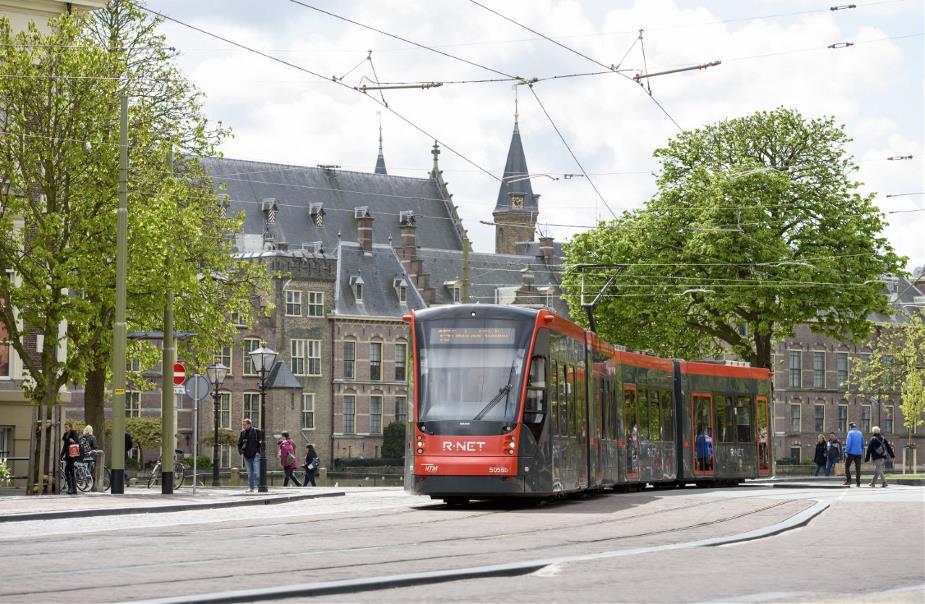A ‘fresh’ electricity infrastructure
24 March 2022
Trams, trains and trolleybuses all work with electric overhead wires. This infrastructure has been designed to manage large peaks. Even if all the connected vehicles suddenly accelerate at the same time, it does not...

Trams, trains and trolleybuses all work with electric overhead wires. This infrastructure has been designed to manage large peaks. Even if all the connected vehicles suddenly accelerate at the same time, it does not overburden the system. This is wonderful, but actually doesn't occur very often. This means that the rest of the time, the overhead lines have a large amount of transport energy capacity available. What else could we do with this? This is what the Mission Zero Centre of Expertise is researching in cooperation with HTM. HTM technical advisor Ron Bakker tells us more about this topic.
Energy generation and distribution
‘We would like the RandstadRail to use real green electricity,’ Ron begins. ‘We have explored different possibilities for this and have now come to the 'solar spiders' that have been set up along the track. These are fences equipped with solar panels between and beside the track, installed along the entire route. By connecting these to the overhead wires, we can produce our own energy during the day. And then we still have a lot of energy left. That is why we also wanted to research to what extent our overhead wires transport energy can be transported from one location to another? And could we then also connect it to devices outside our own network? For instance, it could be interesting to power charging stations for electric cars, or streetlights in a particular neighbourhood. Streetlights in Zoetermeer already use direct current, just like our overhead wires, for instance. So in theory, we could easily function as a supplier.’
Technical, legal and organisational challenges
In theory, this is a fantastic plan. High time to evaluate the concept in practice. in the Energy Transition HTM project, we are working together with Mission Zero to test the technical feasibility of the plans. It's a step-by-step process,’ Ron explains. ‘The prototype of the solar spider will soon be ready and we will research how to equalise the voltage difference between the solar panels and the overhead line. In the meantime we have received calculations that show that the solar spiders act as sound insulation. This means less noise pollution for local residents. We kill two birds with one stone with this. But we also have many legal and organisational hurdles to address. For instance, will we get a licence to supply the energy we produce to third parties? And what impact does this change have on the processes and structures of our organisation? We are doing all these things simultaneously. But if we are successful, it will offer a promising future to our region. In Scheveningen, people are already thinking about the microgrids we could join!’